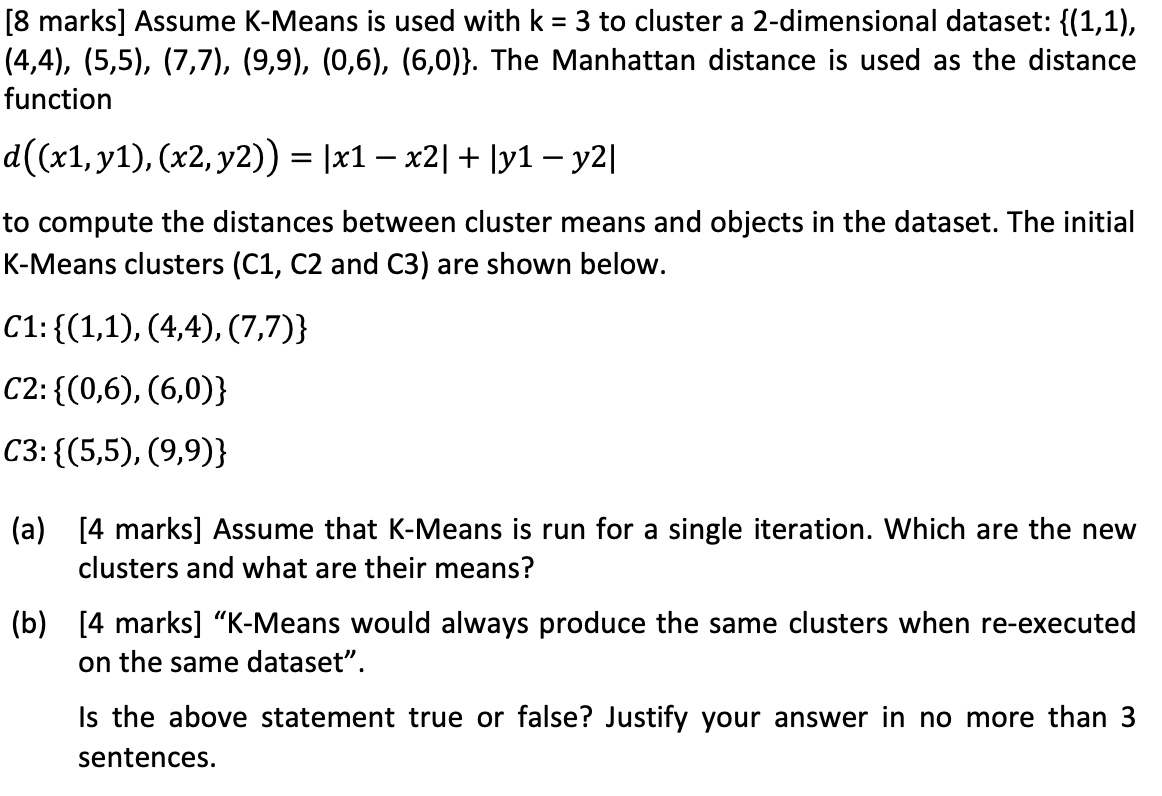Answered step by step
Verified Expert Solution
Question
1 Approved Answer
[8 marks] Assume K-Means is used with k=3 to cluster a 2-dimensional dataset: {(1,1), (4,4),(5,5),(7,7),(9,9),(0,6),(6,0)}. The Manhattan distance is used as the distance function d((x1,y1),(x2,y2))=x1x2+y1y2

Step by Step Solution
There are 3 Steps involved in it
Step: 1

Get Instant Access to Expert-Tailored Solutions
See step-by-step solutions with expert insights and AI powered tools for academic success
Step: 2

Step: 3

Ace Your Homework with AI
Get the answers you need in no time with our AI-driven, step-by-step assistance
Get Started


